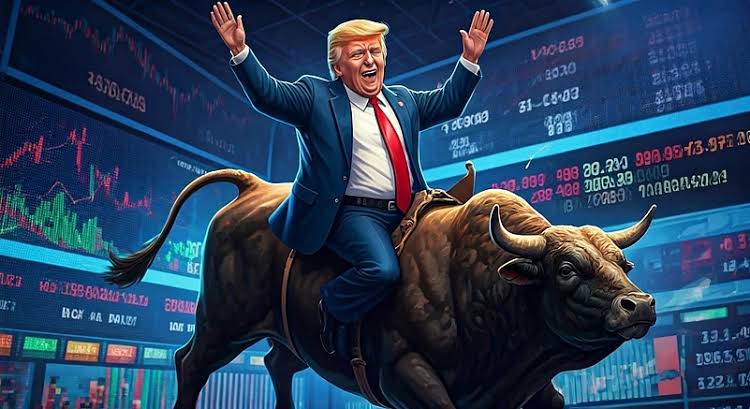
In a dramatic escalation of trade tensions, the United States has raised reciprocal tariffs on Chinese imports to a staggering 125%, effective immediately. This move follows China’s decision to increase its tariffs on U.S. goods to 84%, intensifying the trade war between the world’s two largest economies. Meanwhile, President Donald Trump announced a 90-day pause on tariffs for 75 other countries willing to negotiate, sparking a historic rally on Wall Street and sending Asian markets soaring. Here’s a breakdown of the developments and their impact as of April 9, 2025.
U.S.-China Trade War Heats Up
The tariff hike on China marks a significant shift in U.S. trade policy, targeting Asia’s economic powerhouse after Beijing’s retaliatory 84% levy on American imports. Unlike the 75 countries granted a reprieve, China faces immediate pressure from the 125% rate, a move that could disrupt supply chains and raise costs for U.S. consumers and businesses reliant on Chinese goods. Trump’s strategy appears to single out China while rewarding nations open to dialogue, a tactic he highlighted in his Truth Social post:
“China kept escalating and escalating, and now they have 125% tariffs that will be effective immediately.”
This escalation could force companies to rethink sourcing strategies, potentially boosting alternative markets like Vietnam or India, though the short-term economic fallout remains a concern.
Wall Street’s Historic Rally
Trump’s tariff pause for 75 countries triggered an unprecedented market response on Wednesday, April 9. Wall Street clocked historic one-day gains, with the S&P 500 skyrocketing 9.52%—its third-largest postwar jump—to close at 5,456.90. The Dow Jones Industrial Average surged 2,962.86 points (7.87%) to 40,608.45, while the Nasdaq Composite leaped 12.16% to 17,124.97, its biggest single-day gain since 2001. Investors cheered the temporary relief for global trade, though uncertainty lingers over the China standoff.
Futures markets reflect continued optimism, with S&P 500 futures up 0.5%, Nasdaq-100 futures gaining 0.2%, and Dow futures rising 280 points (0.7%) as of Thursday morning.
Asia Markets Zoom: Nikkei Jumps 8%
The ripple effect hit Asia hard and fast. On Thursday, April 10, Japan’s Nikkei 225 soared over 8%, leading regional gains. South Korea’s Kospi climbed 5%, and Australia’s ASX200 advanced 4.7%. The rally reflects relief over the tariff pause for 75 nations, many of which are key players in Asia-Pacific trade. Closer to home, India’s GIFT Nifty futures traded 910 points higher at 6:40 AM IST on April 10, signaling a potential blockbuster opening for the BSE Sensex and NSE Nifty50 on Friday, April 11. This comes after a lackluster Wednesday, where the Sensex fell 379.93 points (0.51%) to 73,847.15 and the Nifty50 dropped 136.70 points (0.61%) to 22,399.15.
Opportunities and Challenges
The 125% China tariff opens a window for India to capture market share in textiles, footwear, and lower-end electronics, especially if companies diversify away from Southeast Asia (e.g., Vietnam’s earlier 46% rate). The 90-day pause for 75 countries incentivizes negotiation, and India could push for inclusion or a trade deal by autumn 2025, as hinted in prior talks with PM Narendra Modi. Challenges include scaling production, improving infrastructure, and navigating domestic fallout if exports drop—sectors employing millions could face layoffs without swift policy responses.
Conclusion
India stands at a crossroads. The tariff war with China could position it as an alternative manufacturing hub, but exclusion from the 75-country pause or high reciprocal tariffs (e.g., 26-27%) might blunt this potential. Markets are poised for a short-term boost on April 11, yet long-term growth hinges on New Delhi’s ability to negotiate with the Trump administration and diversify trade. For now, India’s economic resilience and strategic sectors offer hope, but the full impact awaits clarity on its tariff fate.




